It was mid-Saturday morning on September 18, 2004 when we pulled out of our driveway,
headed for Elijah Clark State Park near Lincolnton in Northeast Georgia. We were loaded
down with our entire arsenal of rockhounding tools and equipment and were pulling our Coleman folding
trailer. We planned to spend the entire week camping and rockhounding at five separate area locations.
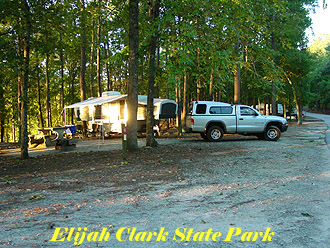
We arrived at the campsite just after lunch. We wasted no time in setting up before
heading out to a site on Strom Thurmon lake where we had previously collected quartz crystals
simply by walking the shoreline. When we arrived at the location, we were surprised to find that
the lake level was high so that there was virtually no shoreline to walk. The only other time that
we had been to this location was in the dead of winter when the Army Corps of Engineers lower the
lake level to control possible flooding and to work on the dams. Since this location was a bust,
we decided to head out to the Jackson's crossroads amethyst site. We had made prior arrangements with
the owner to collect there.
We spent the remainder of the afternoon banging on loose boulders that had been
left over from the last machine dig at the site. Sometimes amethyst can be found in pockets inside
the metadacite country rock. I wrote a previous field trip report about this site that can be read
by clicking on the following link:
Northeast
Georgia Amethyst Dig We were very fortunate to find a few keepers that afternoon as you can
see in the following pictures.
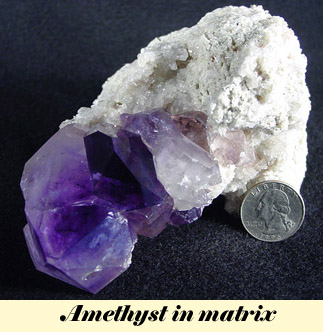
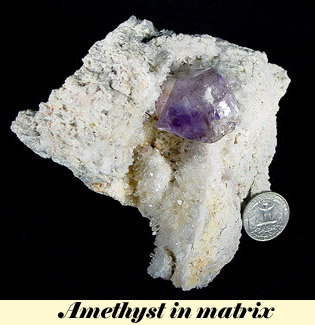
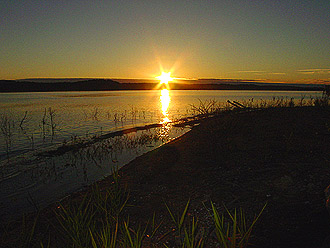
We woke up early on Sunday and were treated to a beautiful sunrise over the
Lake. Elijah Clark is located on the shores on Strom Thurmon. We could hear the drone
of bass boats and the rustling about of fishermen preparing to head out from the nearby campground
boat launch. We discussed our plan of action for the day over a hearty breakfast prepared on our
trusty cook stove - eggs and sausage never taste better than when you are camping. We decided to head
back out to the Jackson's Crossroads site to spend at least part of the day.
It only took about an hour before we realized that there weren't any
decent boulders remaining at the site for us to break apart. The site looked like a chain gang had
been there with thousands of rocks scattered amidst the red dirt on the 1-acre parcel. Without
any real chance of finding anything else at the Jackson's Crossroads site, we decided to drive
over to the Ivey Farm amethyst site, another location that we had made prior arrangements to visit.
I wrote two previous field trip report about this location that can be read by clicking on
the following links:
Ivey Farm Amethyst and Scepter Dig
Ivey Farm
Amethyst Dig
We were told that amethyst could be found by digging in the spoil piles. We
tried doing this for about an hour with minimal success. Neither Chrissy or I have never been
much for blindly digging in old spoil piles, so we decided to call it an early day and head
back to camp. It would be nice to get back early for once so that we could relax and enjoy the
the rest of the day. The temperature was in the mid 70's which was well below normal and
the humidity was nearly unusually non existent, so we couldn't ask for better weather. This was
a great relief after spending the previous week battling off former hurricane Ivan that caused
massive flooding and power outages in western North Carolina and elsewhere.
On Monday morning, we drove south through Augusta and Girard to a location
near the Savannah River where I had previously collected Savannah River agate.
This site is part of a public right-of-way so we would be collecting in the road and road cuts.
According to the Georgia Mineral Society, this material is actually a conglomeration of agate,
jasper, chert, and opalite all mixed together to form a layered specimen that will tumble or cab into
beautiful display pieces. This rock occurs as brown mottled agate and in a large range of
pastel colors from greens to yellows to violets. The fossils you may find are from 30-35 million
years old Oligocene age deposits. Kim Cochran says that there are elems, gastropods, nummulites,
echinoids, and bryozoans fossils in this general area. There are also tortillas, barnacles and
diatoms present. These fossils are not abundant and may be hard to find in quantity. The micro
minerals are located in vugs of the agate/chert rock. If you look closely, you may find
rare phosphate minerals like clear to pinkish strengite, green wavellite, varascite, golden
cacoxenite, brown to yellow-brown jarosite, sharp brilliant crystals and green-brown fibrous
hemispheres of dufrenite, pale chartreuse-green spherical globules of kidwellite, brown to black
fibrous crusts and spheres of rockbridgeite, white finely fibrous tufts of churchite. The vugs
may also contain hyalite opal, limonite, deep red-brown hematite, barite, goethite, gypsum, or
drusy quartz.
Chrissy and I collected for a few hours and I managed to find what I thought
were some decent specimens. I filled one of our large plastic tubs and placed it in the back
of the truck. Just when I was preparing to call it a day, Chrissy happened to located some very
large masses of rock in and next to the road. Naturally, I couldn't resist the temptation to
continue digging. The large rounded rock mass that I decided to attack was about 3-feet in diameter
and was mostly buried in the rocky sand. I dug a ring around its perimeter in an attempt to loosen
its grip on the earth. I knew that these boulders are more easily broken apart when they are
liberated. After about an hour, I finally was able to wiggle the boulder with my large prybar.
I realized that it was much too large for me to lift so I took my sledge and chisel and broke the
big monster in several large sections that I was able to lift from the hole. We would find that this
boulder was filled with lots of pockets that contained an assortment of minerals and formations.
This boulder was so rich that we would end up using all the material that we had already loaded in
the truck to fill the its hole. The following pictures should give you a small taste of what
we dragged home from the Savannah River agate site.
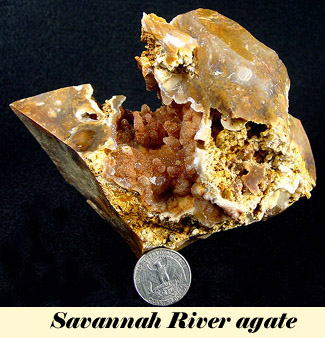
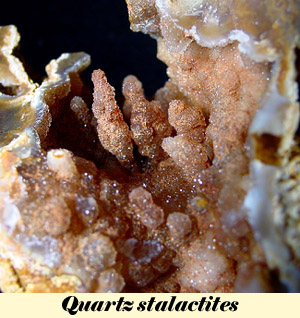
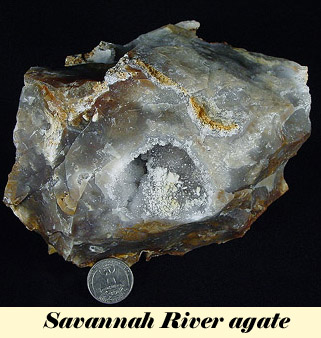
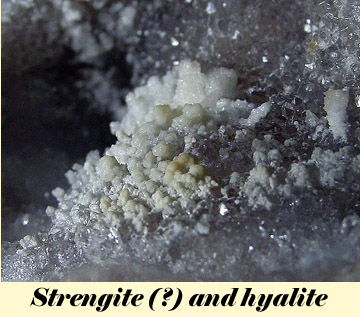
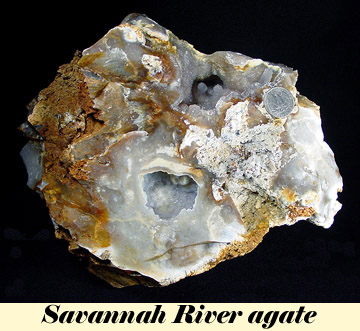
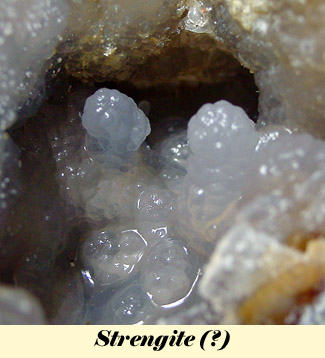
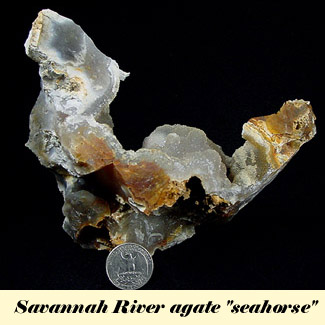
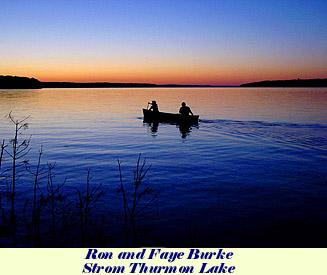
We returned to camp Monday evening and were soon joined by our good friends,
Ron and Faye Burke who drove in from near Gatlinburg, Tennessee. They would be joining us for
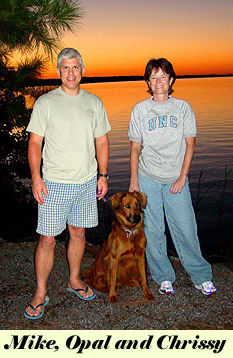 part of our rockin' adventure that week. Ron and Faye would be comfortable in their nifty Casita
travel trailer, or "the egg" as Ron calls it. After supper, Ron and Faye headed out on the
tranquil lake in their canoe just as the sun was setting in an orange colored sky. After they
glided effortlessly by, we took the opportunity to take a family portrait even though
Opal had her mind on a squirrel.
part of our rockin' adventure that week. Ron and Faye would be comfortable in their nifty Casita
travel trailer, or "the egg" as Ron calls it. After supper, Ron and Faye headed out on the
tranquil lake in their canoe just as the sun was setting in an orange colored sky. After they
glided effortlessly by, we took the opportunity to take a family portrait even though
Opal had her mind on a squirrel.
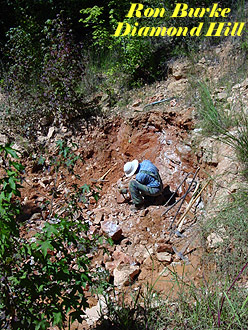
We decided to spend Tuesday at the Diamond Hill Quartz Mine near Antreville,
South Carolina. This site was only about an hour's drive away from the campground. I had arranged
with the owner to visit the site, who graciously allowed me a three day window in which to collect.
When I was completing our trip plans, we were in the midst of our second major tropical
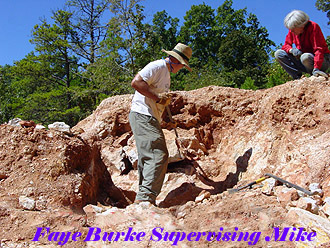 storm and Hurricane Jean was looming unpredictably on the horizon, so I wasn't sure if or when
we would be able to go to Diamond Hill. That site is certainly not a place to be in the rain due
to the thick red mud and collecting spots located in deep pits that quickly turn into ponds. As it
turned out, the weather was idyllic that day that we were there and we had a terrific time. We found
a little bit of this and that, including some nice dogtooth quartz crystal plates and clusters.
storm and Hurricane Jean was looming unpredictably on the horizon, so I wasn't sure if or when
we would be able to go to Diamond Hill. That site is certainly not a place to be in the rain due
to the thick red mud and collecting spots located in deep pits that quickly turn into ponds. As it
turned out, the weather was idyllic that day that we were there and we had a terrific time. We found
a little bit of this and that, including some nice dogtooth quartz crystal plates and clusters.
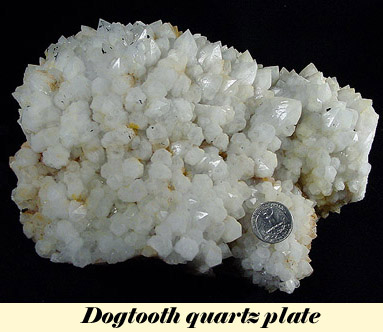
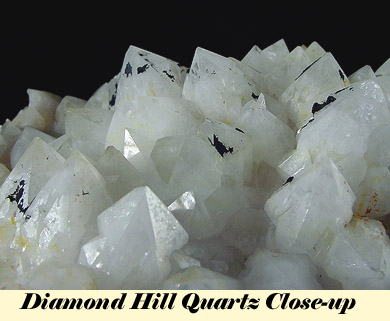
You can read more about Diamond Hill by visiting the Field Trip reports page on McRocks.com where
there are numerous field trip report about the location.
Our next three days were be spent at world famous Graves Mountain. You can read
all about that adventure on the next page by clicking on the following link:
Click here to go to the next page